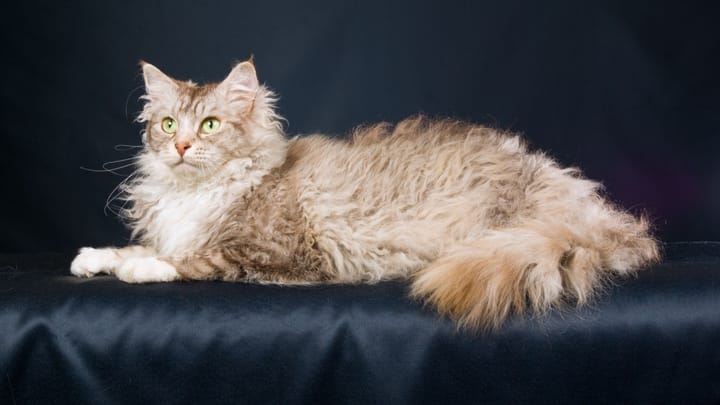LaPerm


This American breed is a curly-coated cat. It was discovered when a kitten displaying a curly-haired trait was born on a farm, confirming that this is a natural mutation. This is not a very widespread breed in Europe but one that is worth paying more attention to.
|
Life expectancy |
The LaPerm has a life expectancy of between 15 and 20 years |
|
Temperament |
|
|
Adult size |
Female
Approximately 12 in
Male
Approximately 12 in
|
|
Adult weight |
Female
Between 7 and 11 lb
Male
Between 9 and 11 lb
|
|
Coat colour
Black, white, chocolate, ginger, cinnamon as well as all dilutions grey/blue, lilac, cream, fawn etc. |
Black Brown White Cream Blue |
|
Type of coat
Short to mid-length |
Short Long |
|
Eye colour
Blue/aquamarine, gold/yellow, green, dichroic eyes |
Blue
Green
Yellow
Odd-eyed
|
|
Purchase price |
The LaPerm costs approximately 350£ |
This breed’s name comes from the fact that it looks as though it has had a perm, just as we humans do when we want curly hair. But this cat is born with curly hair, no perm required!
They will have a total moult once in their life where they will be naked, before their fur regrows, just as curly as before!
More details about the LaPerm
LaPerm: Origins and history
To find out where this breed comes from, look to the city of The Dalles in 1982 in the state of Oregon in the United States. One of the cats on a farm was born without hair, and two months later, curly fur appeared. She was named Curly. Curly's own kittens, all males, had the same curly look as their mother. This proved that the gene responsible for this mutation, which is natural, was a dominant gene. Breeding could begin. It was in 1996 that this breed was recognised by the TICA.
Physical characteristics of the LaPerm
This curly-haired cat has a rather triangular head and ears with curly hair inside. They have a particularly soft coat with quite a thick undercoat, varying depending on fur length.
LaPerm: Characteristics
LaPerm: Behaviour
Breed compatibility LaPerm
LaPerm: Purchase price
On average, the price of a LaPerm kitten is appromately £350. The price varies according to the lineage of the kitten, the breeder, the age at the time of its acquisition or even the sex. For the monthly budget, it will cost on average £25 per month to meet their needs (litter and quality food etc.).
LaPerm: Shedding
Average
During the seasonal moults, you should brush your cat weekly or even twice per week, depending on the length of the hair.
LaPerm: Grooming
It is advised to keep an eye on their ears and clean them depending on your vet’s recommendations.
LaPerm: Health
Expected to live for 15 to 20 years.
Their coat and undercoat offer good protection against cold weather but less so against hot temperatures.
If not active enough, they could become overweight. Seek your vet’s advice and feed your cat using an interactive bowl. This will slow down the pace at which they eat and will be more fun.
The Laperm can develop the same illnesses as any other cat, such as oral diseases. Some other diseases may appear:
- Hypertrophic cardiomyopathy results in the thickening of the heart muscle, this can cause heart failure, which can result in arrhythmias, lung edema, thrombosis of an artery, etc. Screening is done by means of an echocardiography examination, which is usually renewed annually. A treatment can be administered according to the report of the ultrasound to improve the cat’s comfort.
- Pyruvate kinase deficiency is a hereditary condition that will cause anemia if the cat is affected. Its life expectancy can be short (one year) or long (ten years), depending on the evolution of this disease. To find out, a DNA test can be performed to find out if the cat is carrying one or both alleles that can cause the disease.
On average there are 3 kittens per litter. It is authorised to breed short haired and mid-length haired cats.







